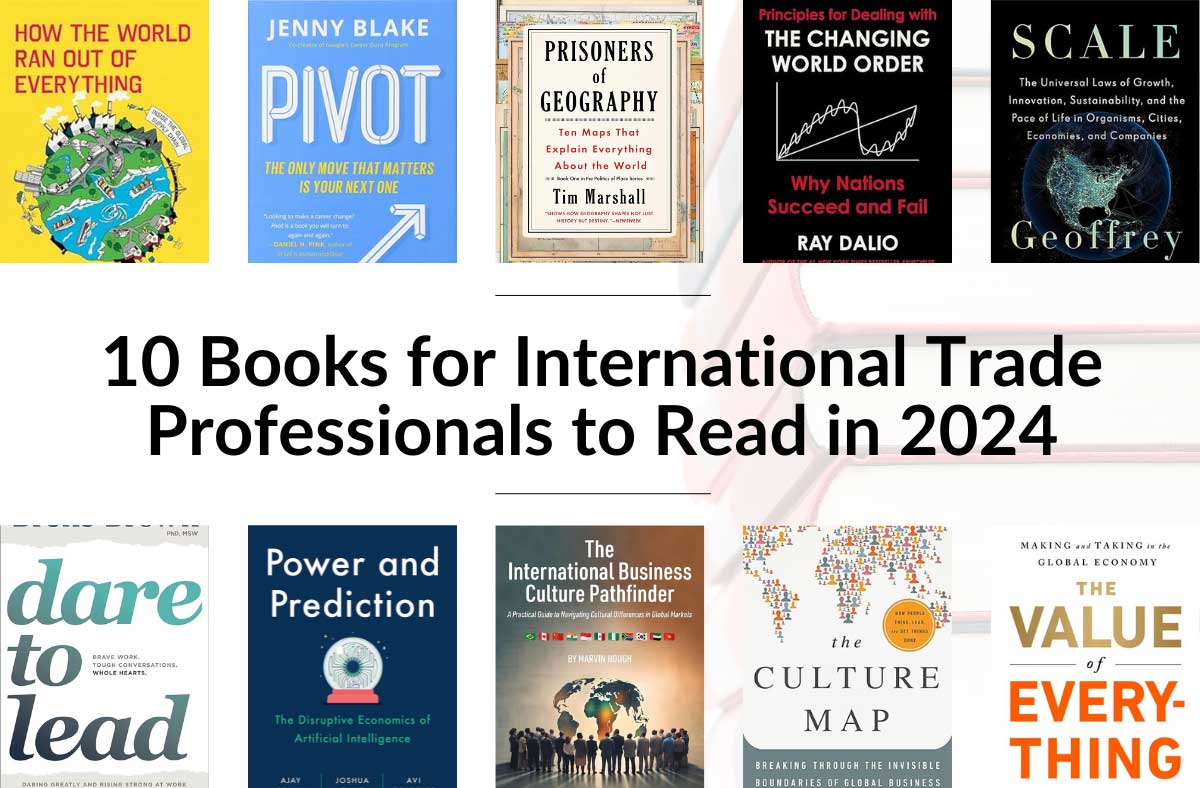
Looking for ways to survive, recover any thrive again, businesses are doing everything they can to increase cashflow and efficiencies. But a recent U.S. Bank study by found 82% of businesses fail due to cash flow mismanagement.
When it comes to international businesses there is an increased layer of complexity and expenses to consider. To find out the most impactful ways businesses can reduce costs and keep cash flowing, FITT brought together experts in customs, shipping, international business strategy and import/export finance.
We explored partnerships, product adaptation, customs issues and preventative measures, shipping methods pros and cons as well as funding options and other cost cutting strategies relevant to international businesses of all sizes.
Watch the full webinar including a LIVE Q&A with the panel
Small business strategies to cut costs without damaging your business
Bernadette Fernandes – Founder & CEO, The Varanda Network

Bernadette’s global business career began in 1986 and has spanned several sectors. She has spent the last 10 years consulting her Varanda Network clients all over the world. She is passionate about helping SMEs develop their export readiness and connect them to business opportunities in markets worldwide.
What are some costs that businesses can cut from their budgets without damaging their businesses?
Bernadette:
Well, in an ironic way, COVID has cut a lot of those costs for us, such as travel. I can’t say that it was without damaging our businesses, as revenues are almost always negatively impacted when big opportunities are cut such as traveling to meet a buyer or to cast our nets wide at a trade show or networking event. But certainly cutting what I call “non-essentials” early on and focusing on profitability will lessen that impact. Costs could be cut would be things like office space. If you’re leasing for example, you could negotiate a new lease agreement given the remote working that’s happening due to COVID. Office supplies, such as printing, coffee, post, especially if you have less people coming into your office space are an easy cost to get rid of.
Technology is a tough one because I don’t normally advocate cutting technology, especially the technology that allows you to automate and streamline. But now’s not the time to invest. So if you’re looking at an inventory management system, for example, you may want to defer that decision and make do with spreadsheets and data entry. Corporate training is another one. Training and education is so important, but this is an area where you can instead focus on the best practices training that exists within your own organization. And then as much as I hate saying this, consulting services like mine would be a place to cut and focus on your more essential services.
Could you expand a bit more on what businesses should definitely not economize on right now?
Bernadette:
The top thing that I don’t think anyone should ever economize on is people. I don’t think that businesses should start looking at saving on their talent. The cost of getting them back tends to be far greater than retaining them. But if HR is your biggest cost, the one thing you can do is to shift the responsibilities to more revenue generating activities, streamlining processes to become more efficient and productive and things like updating your website and collateral.
By the same token, it is tempting to reduce wages or to lay off as a quick fix in times of crisis. But I find it’s always better if your people costs are so high that you have to do that, to reduce hours than to potentially use your top talent.
Marketing is typically among the first costs that people get rid of. But marketing is so essential because you’ll probably be looking to identify new target markets and develop new outreach strategies. So if you cut marketing, you will definitely damage your growth potential.
And lastly, I would say insurance. A pandemic is bad enough let alone a disaster accident in your operational facilities, but also insurance to cover product delivery and customer payments.
Could you tell us about some strategies that businesses are using to adapt and pivot while also keeping those costs down during a crunch time?
Bernadette:
Well, I see businesses showing their resilience all over the place, and in adapting to things that are beyond their control, like attending Zoom meetings instead of travel. In my line of business, I’m seeing a lot of virtual trade missions and site visits that we weren’t seeing before. And in some cases, when physical site visits are absolutely necessary to visit a supplier or a buyer, I’m seeing a lot of temporary outsourcing. An example of temporary outsourcing as I call it, would be contracting local boots on the ground to visit and gather the decision-making criteria that you need.
In terms of pivoting, the strategy I’m most seeing is a transformational strategy, mostly to digital and virtual business models, leveraging and maximizing on things like social media and advertising on Facebook for example, where it’s so inexpensive and effective for target marketing. Some businesses that have never leveraged government programs or funding, have found it useful to start leveraging some of those reimbursement programs or incentive programs to generate additional revenues.
And what I personally recommend is to focus on what you do well and cost-effectively, but expand your footprint. So you don’t have to reinvent or rethink, just go deeper into the market. But what businesses are doing most isn’t really a strategy at all but it’s just being ready to think and act fast.
Innovation and time to market are both critical during times like these. At the onset of COVID, many companies were able to pivot almost overnight to provide critical equipment and supplies, the respirators, the ventilators, PPE like face shields and gowns and rapid testing and disinfecting autonomous robots.
Finding, improving and optimizing partnerships to do more with less
Sonia Galat – Founder & Managing Director, Africa Business Venture

Sonia is the director of Africa Business Venture, an online platform providing advice and solutions for companies that are looking to do business in Africa or expand within the African markets. She is also the director of the Chamber of Commerce of the Ivory Coast. Coming originally from a legal background, Sonia has extensive experience working with international companies in the energy sector, helping them to outsource their supply chains and implementing global partnerships.
Sonia, what are some ways that businesses of all sizes are using partnerships to improve their business offerings, and efficiency?
Sonia:
Depending on what businesses want to achieve, they can use partners to enter new markets and develop some new channels. They might want to create new intellectual property or put their resources together to develop some new infrastructure or simply to reduce risk. I’m specialized in Africa and gaining access to new markets there. Having a local partner that already has a customer base and a niche is something that can really be helpful for companies. Especially now, this is the period where everybody’s at home, everybody’s more open to discussion, so this is a very good time for SMEs to position themselves in a market they may have never have previously considered.
The other elements that where you can use partners to reduce on costs could be sharing a piece of technology. See which elements of your company could be used by another company and create a whole new service, and test multiple things with different partners and see where it will lead. Another way to reduce inefficiencies and cut costs is to look into outsourcing the administrative tasks or low-level tasks that take a lot of energy and resources to countries such as Mexico or South Africa or any other countries where those low level tasks could be accomplished at a lower cost. That will free you up to put your resources and energy into developing new products that will help you get back to growth.
Can you tell us more about how businesses are finding these types of partnerships and ensuring that they’re a good fit for their business plans?
Sonia:
The first thing businesses should do is look at their existing partners. Is there any room for improvement? I often see businesses sign a partnership but then never put the marketing resources behind it to really develop the partnership. Is your partner trying to compare new markets? How can you support your partner? Once you’ve done this exercise, if you’re looking for new business partnerships because maybe you want to go into new territories, you will a lot of resources and databases available to help find potential partners.
I also recommend looking into joining a local Chamber of Commerce. They are great places to meet potential business partners. Trade organizations and associations are also really good places to find business partners that are pre-vetted so you know that they have the same vision in terms of what they want to achieve. And look at the virtual events that are happening at the moment. For a lot of SMEs, the cost of trade exhibitions is very high so they can usually do only one or two trade exhibition trade exhibitions per year. But right now the virtual trade exhibitions are almost all completely free, perfect for SMEs.
If there’s an opportunity to speak at a virtual event, that can be great visibility, or you can network online with other attendees. And one other place where I found some of my best contacts is through LinkedIn. You can use the LinkedIn sales navigator, but ensure you have a real strategy in terms of sourcing your contacts.
What are some of the ways that you’re seeing companies use technology to improve efficiency?
Sonia:
At Africa Business Venture this year we really dug into online marketing tools to automate how we reach out to customers and generate leads. I had no idea how many tools were out there, but they all offer free services. To take advantage of them you should develop a commercial strategy to reach new business opportunities by implementing those tools. We talked about attending virtual trade shows, but you could also create your own event with a focus on your own business and what your business can bring. Using platforms like Zoom, any business can create a whole curated event centered around their expertise and these events can be a perfect way to showcase their products.
Then when it comes to team development, you have also all of the online training that is available. There is so much content out there at the moment that this is a great time to dig into some online training for your staff to prepare for the next phase of your business.
Reducing customs and shipping costs is about more than just shopping around for the best prices
Rahim Mohtaram – Global Supply Chain and Purchasing Consultant, Smartech Investment Corp.

Rahim has been working in global supply chains for 15 years and has negotiated and executed more than 155 international contracts in sales, purchasing, agencies and distributors in 25 countries. He is also a CIFFA certified instructor and provides consultation on cost reduction strategies.
Where are importers, exporters losing money in international shipping right now?
Rahim:
Let’s look at our attitude about costs and price. I’ve seen many companies who are trying to decrease their costs by just decreasing the fees of customs brokers or transportation companies. A very important point which I always advise my customers to have in mind is that you have to think about the total landed cost, not just about the price that you are paying for services. In some situations, decreasing certain costs requires increasing some other costs in other fields. For example, if you pay a bit more to a professional transportation company for their freight, you may avoid many hidden costs.
Businesses are often surprised with hidden costs over the course of their supply chain. I expect my transportation company to clearly explain me what types of costs are included in their fees and what types of costs are not included. So we have to define the exclusions and inclusions. For example, sometimes I might give incorrect information to the transportation company about the weight and that might cause a very high fine such as, VGM, Verified Gross Mass. You should do the work to have a clear and comprehensive agreement with the transportation company and customs brokerage companies you work with.
I have a tip for small businesses: pay attention to abbreviations! When you see in your contract or in your quotation, the abbreviation, for example my price is $1,000 FIOST. FIOST means Free In Out Stowed and Trimmed. This has a technical meaning. And if you do not understand the meaning of this, it means that you will be surprised when you will receive your invoice. So, whenever you see something that you do not understand, ask for a clear definition.
Are there any other cost-saving logistics strategies that you’re seeing businesses employing right now during a time of disruption?
Rahim:
I think when we talk about costs, it’s not good to just talk about financial costs. We have to pay attention to some costs which are related to time and to headaches. Instead of just decreasing the financial costs, I suggest companies keep more inventory, because your credibility is more important than $1,000 or $2,000. Try to have some alternatives from local suppliers instead of buying 100% of your products from overseas.
Also ensure the optimum usage of weight and volume in air transport and road transport. We have to make the best of the space that we have. Along with that, ensure you are using the most suitable packaging for your product and your mode of transport. One of the best ways to do this is to have close relationship with your partners and suppliers and always look at ways of decreasing the costs together. Because we are a part of the same competition unit. Nowadays experts say that companies do not compete with each other, supply chains are competing with each other. So we have to find solutions along with our suppliers and with customers, and we have to work together to find the best solutions. Engage with customs brokers as early as you can because the rules are changing fast and you need the updated information.
Increasing your cash flow through financing may be more accessible than you think
Amesika Baeta, CITP – Senior Account Manager, Export Development Canada (EDC)

As a senior account manager at Export Development Canada, Amesika works with companies of all sizes, of all industries, helping them take their business abroad providing them with trade finance, knowledge and risk mitigation strategies. She has worked in international trade for over 10 years.
For businesses who are looking to increase their cash flow during a tough time, what are some of the available finance options?
Amesika Baeta:
This is probably the number one question that I receive, companies asking how do I access the necessary cash flow or working capital to grow my business? And what I tend to see is a company’s first step is always to run to their bank to ask for money. However, I feel strongly that running to your bank without being prepared can actually force you to lose out on opportunities to improve your position. This question come down to three important key items:
The first being self-evaluation in terms of the cost cutting experience. Does your company have a business plan? Have you adjusted your business plan to reflect the current pandemic? And by doing so, you are evaluating your business processes, the priorities for your company at this time, and really determining where that cashflow or that working capital is needed in your business at this time. Part of that strategy is also evaluating your expenses and reviewing what expenses can be cut. So for example, I’ve had some clients who’ve cut their executive pay, they’ve maybe reduced bonus payouts, sometimes reduced their workforce or they’ve found better efficiencies within their operations where they could quickly pivot to sell online as well.
Secondly, working with your current clients can also be a strategy, such as asking your clients for larger deposits or installment payments to get cash in the door much quicker. In this time, companies are very aware of the difficult position that various companies are in, especially when you’re a small business. We have to remember that conventional business practices are changing and you have to find the best practice that will suit your business. If your company has traditionally given longer payment terms such as net 60 or net 90 day terms, maybe this is a time where you should be re-evaluating that and cutting that back. Maybe you should only be extending 10 days or 15 days or maybe 30 at most in order to get that cash in as quickly as possible.
I also recommend, depending on the type of industry that you’re in, whether you provide a service or a product that you should be working with your clients to figure out whether there’s another type of product or service that they need at this time, and this can be another source of additional revenue for you. Right now, companies do not want to be going to multiple vendors or suppliers to provide them with the resources that they need. So if you can find a way to fulfill that need for them, it will not only bring more revenue into your business, but it will also further cement your relationship with that client because you’re serving their needs. So do not hesitate to speak to your clients, ask them what they need at this time and see how you as a business can support those needs.
And lastly, let’s talk about working capital. I know as a small business owner, it can be really scary to go to your bank, but I’ll tell you, the banks do have appetite right now. This is a social crisis with economic impacts, meaning we’re not yet in a recession so the banks do have a lot of money. Speak to them to see what they can do for you at this time, whether that means bumping up your operating line or establishing a new operating line.
It’s also important that businesses look at the different government programs that are available right now. EDC in partnership with the banks right now have a BCAP guarantee program, which is the Business Credit Accessibility Program, which helps get working capital to companies who are having specific cashflow challenges as a result of the pandemic. You do not have to be an exporter to apply for it and EDC is providing the 80% guarantee which will enable the bank to have more appetite to lend you the working capital that you need.
EDC itself is another great resource to go to for working capital right now. They are the small business bank and provide a variety of types of financing options for clients. Factoring is another way to get that cash flow that you need to complete a contract – you sell your purchase order to a factoring company and they will give you money up front so that you can use those proceeds to complete the contract. So these are some of the great measures that I think companies can think about and implement to improve their cashflow during this time.
How does insurance play into cost savings and what is your advice about how businesses can approach that right now, especially the ones who might be struggling?
Amesika:
We know that risk is inevitable as a business owner, especially when you’re doing business abroad. The real key is to evaluate where your risks are and have a plan to mitigate them. By having a plan and being prepared for whichever scenarios may arise will save you money down the road. You won’t be blindsided for any foreseen costs or charges that you didn’t know were coming. Credit insurance or what’s often referred to as “accounts receivable insurance” is a cost of doing business. It helps mitigate your risk of not getting paid. That saves you a lot of money because the amount of effort and time that go into replacing that revenue is a lot more detrimental and a lot more expensive than it is to pay for insurance in this time.








disqus comments